
Motorola, or Lenovo’s brand Moto as they seem to be called now, are something of a strange beast. They host a range of products which are highly sought after, and yet they continually fail to get those devices into the hands of the consumers lusting after them in anything approaching a reasonable time frame. Such is the case with the latest handset they’ve released in Australia – the Moto X Force, a device which hits the market almost a full year after it first showed up.
The X Force is being sold outright in Australia, instead of on contract as the Moto X Play and Moto X Style – which are also from the same series. At $599 RRP, you expect a lot from the handset, especially considering some 2016 flagship devices from other manufacturers are starting to drop to this price point.
But the Moto X Force, despite being late to market, does have a neat trick: A shatterproof screen. Called ‘ShatterShield’, the X Force, and indeed all the phones in the Moto range with ShatterShield screens, have a plastic screen guaranteed for 4 years, not to shatter. The same however can’t be said for the phone itself, suffice to say this is a screen warranty, not an excuse to abuse the phone and push boundaries – there’s examples of the phone chassis bending and rendering the phone useless, but the screen remains unscathed, so remember that.
So, it’s almost a year old phone, it has a neat parlour trick and it’s $599. In a world where phones are generally replaced in a year, is this phone worth your hard earned dollars? Let’s find out.
What’s inside
The Moto X Force is a wide phone when it sits in your hand, it feels wider than the Nexus 6P because it is, but only by 0.2mm so it’s almost nothing. But sit comfortably it does, the ‘Ballistic Nylon’ textured back feels ok, sort of like a speaker grille but the additional texture makes it easier to grip and it’s not overly tall. This shorter form factor and button placement with volume rocker and power button on the left makes it easier to use one-handed than most ‘big’ format phones.
The familiar Moto design is there, in this size it’s familiar and comforting if you’ve used a recent Moto device. The dimple on the rear with the batwing Moto logo embossed in it is there, but it’s not a fingerprint scanner, in fact that’s a glaring omission from the Moto X Force that’s hard to look past right now – though as a year old phone it’s something to think about.
The phone feels sturdy, it’s got a metal frame that runs between that ballistic nylon back and the screen. The screen – a 5.4” AMOLED Quad HD display – is of course the major selling feature of the Moto X Force. Featuring Moto ShatterShield screen technology the screen is a layered affair that offers protection from drops, but bear in mind this is only for the screen and the embedded lens, not the body of the phone.
I admit I dropped the Moto X Force a few times during the review – twice on purpose and the other times not so much and it didn’t actually do anything so it works well on that front.
The phone isn’t ruggedised however so the worry is that the solid metal chassis will somehow be damaged or warp when dropping the phone so best you don’t attempt to test this out too much, suffice to say it is a nice backup to have.
While not ruggedised, Lenovo is sending a confusing message with ShatterShield, as well as including a Water-repellent ‘advanced nano-coating technology’. It’s not waterproof or even IP rated, but it essentially makes the phone water resistant enough for say using it in the rain.
Under the solid design, Lenovo has used the Snapdragon 810 SoC which was featured in a number of devices last year. Famously the processor had heat issues which saw throttling occur under load, that said it’s still a fairly decent processor.
The SoC is paired with 3GB of LPDDR4 RAM so it works fast loading apps in and out of memory too.
The phone has 32GB of on-board storage, with just under 25GB of storage available to the end user once you switch it on. A microSD card slot in the phone means you can insert a card up to 2TB . The microSD Card can also be used as internal storage if you choose to do so, just one of the benefits of Moto using almost stock Android – it’s Android 6.0 btw – on their phones.
Camera wise, you get a 21MP sensor on the rear and a 5MP sensor on the front. The front sensor has a 1.4um pixel sensor for better low light photos, but unfortunately the rear sensor has no such increased light sensitivity. Both sensors are seated behind a f/2.0 aperture, and both sensors have a flash which is a novelty for those shooting a selfie in low-light.
While ShatterShield etc is nice, it’s the massive battery in the phone that was one factor that made this phone very attractive for me. At 3,760mAh the battery is quite large compared to much larger phones including the normally large Samsung Galaxy Note series.
Paired with Fast Charge that Moto claims will give you up to 8 hours of battery life in just 15 minutes, the Moto X Force claims 48 hours of use, and while it doesn’t quite get there it does give me, a heavy smartphone user a full day of use.
The phone runs well, has a relatively solid design and has a great big battery to power it, it’s not bad.
| Key Specifications: | Moto X Force |
|---|---|
| Release date | September 2016 |
| Screen size | 5.4-inch |
| Screen technology | AMOLED |
| Resolution | 2,560 x 1,440 |
| PPI | 540 |
| Rear camera | 21MP |
| Rear aperture | f/2.0 |
| Front camera | 5MP |
| Front aperture | f/2.2 |
| Chipset | Snapdragon 810 |
| Core config | 2.0 GHz x 4 + 1.5 GHz x 4 |
| RAM | 3GB |
| Storage | 32GB |
| MicroSD | Yes, up to 2TB |
| Battery | 3,760 mAh |
| Battery removable | — |
| Connector | MicroUSB |
| Headphone Port | Yes |
| Headphone Location | Top |
| Speaker Configuration | Front |
| WIFI standards | 802.11 a/b/g/n/ac |
| Bluetooth standards |
|
| NFC | Yes |
| Location | A-GPS |
| Android OS | Android 5.1.1 |
| Vendor skin | Moto Stock |
| Dimensions | 149.8 x 78 x 7.6 mm |
| Weight | 169g |
| Colours | Black |
Moto X Force Camera
Rear
With an up to 21MP camera sensor on the rear with f/2.0 aperture and auto-HDR in software the rear camera on the Moto X Force is well positioned in terms of specs. You’ve got a choice between 16MP at 16:9 widescreen, or 21MP at 4:3 aspect ratio in software, so it’s a choice between that.
There is no Optical Image Stabilisation on the Force however, meaning that you’ll find low-light shots not quite up to the task when compared to even last years flagships like the Galaxy S6 or even the Nexus 6P, which itself only has EIS.
While it has no OIS or EIS, the Moto X Force does include “Phase Detect Auto-Focus”. This addition is implemented by Moto to theoretically allow the camera to focus incredibly quickly. The phone technically has zero shutter lag as well, but in practice you do get a bit of variance in terms of the quality of your shot.
With an f/2.0 aperture, no extra light sensitive sensor Low-light shots on the X Force aren’t the best. The photos tend to show high levels of graininess with the software working overtime to compensate.
In daylight shots however, the Moto X Force is a surprisingly decent shooter with a good image, though again not up to last years flagships.
Front
The Moto X Force has a 5MP sensor on the front, paired with an LED flash. I’ll admit it’s a novelty for me, I`m not really a ‘selfie’ kind of person unless it’s meeting someone I want to take a pic of with, or maybe just taking a snap on holiday outside a tourist attraction. But selfies are here to stay and with the Moto X Force you can snap a selfie in low-light relying on the extra-sensitive 1.4um pixel sensor or the flash.
It’s a pretty decent camera, but even in low-light that flash comes in handy as you can see.
Note:
I’m comparing the Moto X Force against last years flagships due to the release date of the phone, in terms of this years flagships it’s still a technical notch below.
Software
Every manufacturer likes to put their own touches on software. Despite Lenovo using a mostly stock Android system on their Moto series phones, they do put their own camera software on them. While their innovative double-twist gesture for launching the camera quickly is great, the actual layout of the app isn’t what I call intuitive.
The interface is clean with a focus reticule on-screen the main visual cue in the app, you can change the light levels using the reticule, as well as focus. There’s no shutter button, though a shortcut to select video as well as switch from front to rear cameras is present. Instead Moto uses a tap anywhere function that lets you capture an image. You can drag the reticule around till you find the focus depth you’re after before tapping anywhere else on the screen to capture, but I do prefer an actual shutter button.
The lack of a quick shortcut to toggle flash, HDR, or anything else is a bit frustrating, but a slide-out drawer does allow semi-fast access to the settings.
Display
The keynote of the Moto X Force display is the ShatterShield technology, as I said earlier, I used it, it works, but the screen itself is also worthy of being held in high esteem.
The Moto X Force has a 5.4” 1440p ‘Quad HD’ – that’s 2560 x 1440 resolution – AMOLED display. The pixel density is 540 ppi making it quite a densely populated display, it’s easy to read text on and if you pop it into a Cardboard headset it looks great.
After the Moto X Play and Style last year used LCD displays, the Moto X Force differs by using AMOLED. AMOLED has always felt like a nicer display than LCD to me, it has a warmer set of colours that seem to just ‘pop’.
The display on the Moto X Force isn’t quite up to displays on the higher end Samsung phones though. The difference could be due to the extra layers on the display used for the ShatterShield technology, but it’s hard to say for sure .
One noticeable difference is that the screen isn’t as bright in full sunlight as I’d like even at full brightness. Inside though it’s bright and very easy to read, even with the brightness around 50%.
The use of AMOLED also allows Moto to further sip power when using the Moto Display function, a software feature that Moto uses to display notifications on your screen. AMOLED only turns on the pixels it requires and can leave the rest of the display black.
Overall, if you like AMOLED displays the Moto X Force looks good.
Sound
The Moto X Force features a front-facing speaker, there’s dual grilles on the front of the phone and it looks the business, but seems to be lacking when it comes to playback. It’s the usual story, it sounds a little tinny when you play back music or video.
While a number of phones with front-facing speakers include a top and bottom speaker to give stereo sound. Unfortunately on the Moto X Force the phone has no second loud speaker when watching a video in landscape mode, with Moto choosing not to utilise the earpiece as a second speaker.
Sound through earphones and Bluetooth works well, there’s nothing overly fantastic about the sound, but it works.
Moto X Force Software
Android OS
The Moto X Force is listed on the Motorola Australia website as coming with Android 5.1.1 though the device I was using came with Android 6.0 out of the box.
Under their own steam as Motorola, Moto X series phones had a good history of updates with their phones. Under Lenovo it hasn’t been as good, but the fact that the Moto X Force comes with Marshmallow is a good sign. Neither Lenovo, nor the Moto brand has promised Nougat for the device so it’s not a definite certainty that this will happen.
While the X Force does have Marshmallow it does only have the December 2015 security update, the phone is also listed as vulnerable to Stagefright as well as the more recent Quad Rooter security vulnerabilities.
It’s hopeful that a security patch may arrive for the Moto X Force at some stage, but it’s not here now almost a year after its last update.
Moto
Lenovo’s Moto brand is among the most stock third-party OEM phones available on the market today. The phone has precious little installed on the phone beyond the stock Android operating system. What it does have is Moto.
Moto is a catch-all for all the improvements that Lenovo has included in their Moto phones. The Moto improvements are, for once, actual improvements on stock Android. They add value, or you can just switch them off without interrupting the usability of the underlying OS.
The highlight for me is the Moto Display, a function which display notifications discreetly on the screen as they arrive. Rather than flash up, the notifications fade in and then fade out, letting you see what’s happening without actually switching your phone on.
Voice commands in Moto – or Moto Voice as it’s known – are similarly excellent, though as most people I speak to find, actually talking to your devices is still a mostly alien exercise. One feature I found handy many times was the Find my phone function. Often I put my phone down but forget where it is, simply walking into a room and saying ‘Ok Moto X, find my phone’ was enough if I was in the right room to activate a beeping and flashing alert on the phone which I could easily find.
Moto Voice can also perform a number of other functions – turn Wi-Fi or Bluetooth on/off, load a song in YouTube. Not just responding to voice commands, the Moto Voice feature will also read back SMS to you, announce who is calling when an incoming call comes in.
There’s also a number of Actions in Moto. You can turn on double-twist to launch the camera, chop to launch the torch or even simple functions like lifting the phone to your ear to activate Moto Voice. The phone can even monitor for when you’re looking at it so it won’t turn the screen off, or when you reach for it to flash your notifications up.
Extra apps
There’s two other apps included on the Moto X Force that aren’t ‘stock Android’ beyond the camera app: the Gallery and the SMS app. That’s it. It’s one of the least ‘bloated’ software installs you’ll find on a phone today.
Moto X Force Performance and Battery
Performance/Battery Life
The Moto X Force has a lot to live up to with the release technically a year late. The phone has flagship specs for 2015, but this being 2016 it’s running a little behind. That said, the Snapdragon 810 SoC and 3GB of RAM make for a decent pair.
Performance wise the phone runs quite well on a day to day basis, loading and unloading apps from memory quite well. 3D games like Need for Speed and Riptide ran well with no discernible dropped frames and as a bonus, the phone didn’t appear to get warm until I’d been playing for a fairly extended period.
In terms of battery life, the Moto X Force is a real trooper. While I didn’t see the 48-hour battery life claimed by Lenovo, the X Force is a true all-day warrior lasting a full day for me when using it fairly heavily.
A full day for me is a lot of email, syncing at least 4 accounts, web browsing, media playback including podcasts, videos and of course streaming Netflix or Presto. I also like to read eBooks and hit social media.
On average I hit around about 4 hours screen on-time with around 13 hours of battery use, while still staying above 15% battery to spare. I was generally home and ready to plug in by that stage. Of course with the Fast Charge feature that meant I was topped off fairly quickly.
The addition of Fast Charge is a neat trick which I find to be of much more benefit than wireless charging, but here the Moto X Force is not to be found lacking. Lenovo include support for both PMA and Qi wireless charging standards, though you do have to supply your own charger.
| Device | PC Mark Score | Battery Life |
|---|---|---|
| Moto X Force | 5,617 | 8h19m |
| HTC 10 | 5,467 | 7h18m |
| LG G5 | 5,798 | 6h32m |
| Samsung Galaxy S7 (SD 820) | 5,860 | 8h25m |
| Samsung Galaxy S7 (Exynos) | 4,793 | 8h08m |
| Samsung Galaxy S7 Edge (Exynos) | 4,808 | 9h06m |
| Huawei Nexus 6P | 4,380 | 6h50m |
Connectivity
The Moto X Force is a pretty decent all-rounder when it comes to connecting it to wireless or cellular networks with the inclusion of dual-band Wi-Fi 802.11a/b/g/n/ac, Bluetooth 4.1 LE and of course support for all the Australian cellular bands including LTE Bands 3, 5, 28 and TDD 40 for the Optus 4G Plus network.
The glaring omission for the Moto X Force is the lack of fingerprint sensor. It’s hard to forgive this for a phone being released this year. The phone may have been launched last year when fingerprint sensors were new, but for a higher end device in late 2016 it’s not something people will overlook, especially with even $100 no-name Chinese phones coming with fingerprint sensors.
The one thing that the Moto X Force has which is a must these days is NFC, so if you’ve taken up Android Pay as a payment method you’ll be pleased to know you can continue using it on the Moto X Force.
Lastly, a phone with a battery this big is of course going to be excellent for playing Pokemon Go or Ingress – both battery and GPS intensive apps. The battery held out quite well, and the GPS location is solid with a fast lock to satellites that shouldn’t have you drifting too much in game.
Moto X ForceConclusion
For the most part there’s very little wrong, and a lot right with the Moto X Force, but it’s literally getting to the point where it’s a year old, and that’s a problem, especially with the current security patch level.
The phone with its ShatterShield technology, immense battery and decent camera is good, but at nearly 12 months old it’s not quite worth the $599 price tag.
Lenovo, and Motorola before them have had real issues getting devices to market on time, the Moto X Force is no different. In the words of the great Obi Wan Kenobi: ‘This is not the droid you’re looking for’, those ‘droids’ are of course the Moto Z series handsets that Lenovo announced in June, but whether they arrive in a timely manner or not is another question.
There are more recent devices now on the market in Australia around the same price tag and there are more arriving every day. If you’re a klutz that requires a big battery though, the Moto X Force offers features that will be hard to pass up.
You can buy the Moto X Force from the Motorola Australia, or the Harvey Norman websites.

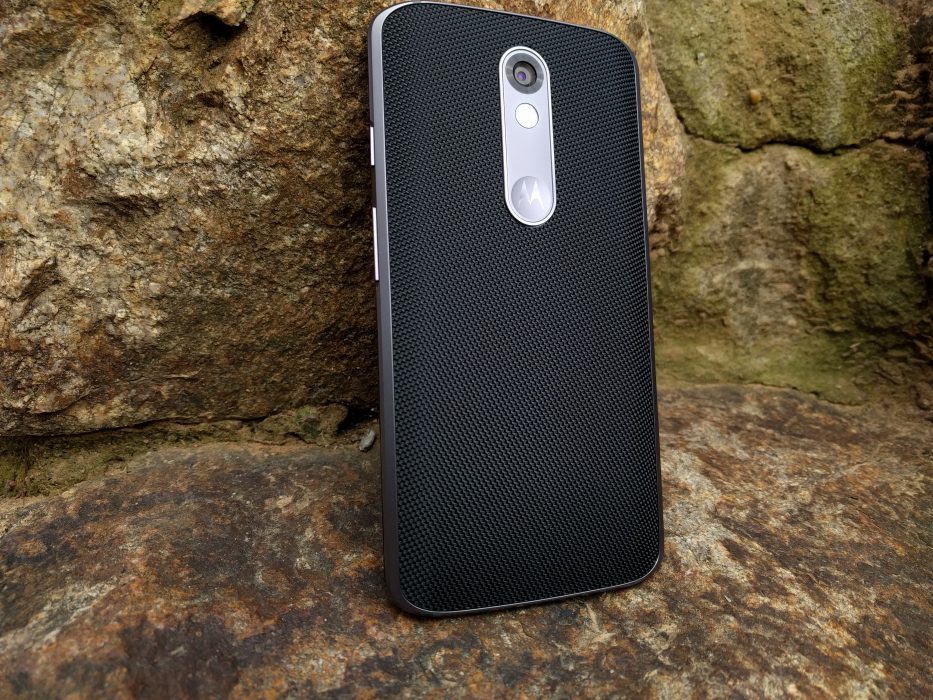



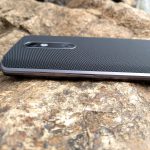

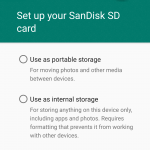
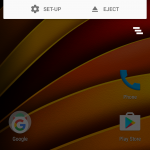






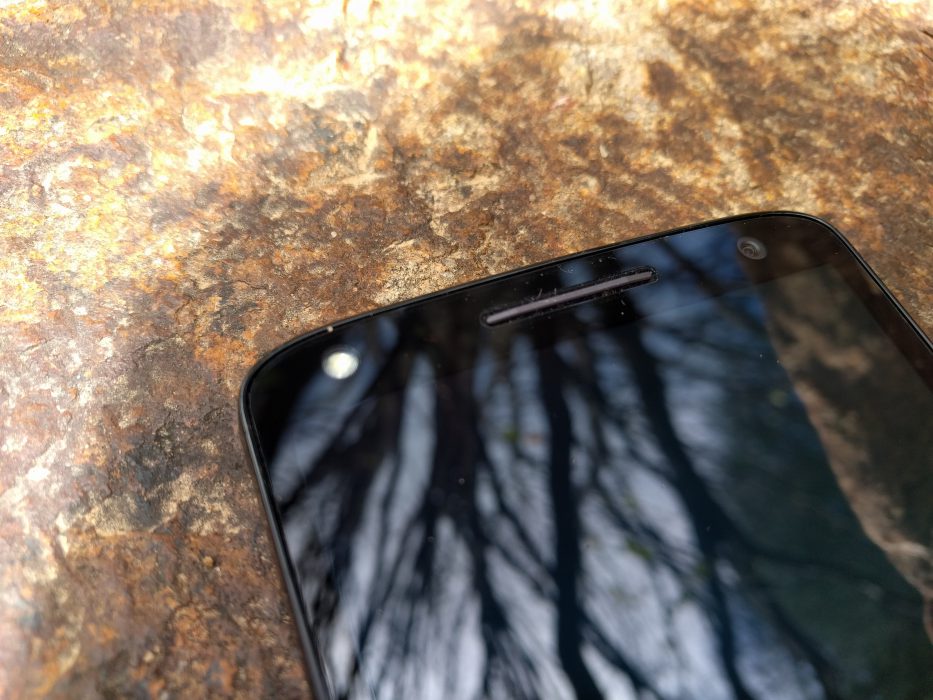

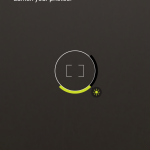

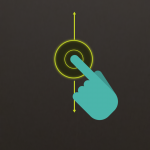
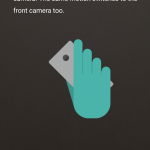
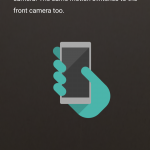
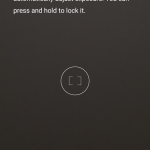
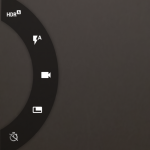
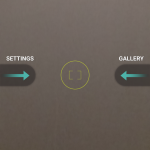

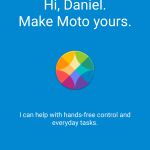

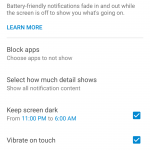

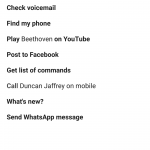



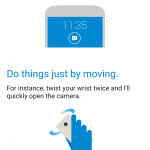





“It’s hopeful that a security patch may arrive for the Moto X Force at some stage, but it’s not here now almost a year after its last update.”
And this, right here, is the primary problem with Android. Once you step away from the Nexus range there is no guarantee of any updates for security purposes, which are arguably more important than the higher publicity OS upgrades. Come on, Android manufacturers, you can do better!
“There are more recent devices now on the market in Australia around the same price tag”… I’m looking for a mid range phone for my son – which phones are you thinking of here?
I got one as well and love it so far it’s replacing my 6s as my main handset, hopefully it will get nougat at the end of the year
love this phone, but they needed a fingerprint sensor and usb type-c
Its expensive for what it is – a 12 month old mid range phone. Motorola Australia are obviously trying to put the brand in the basement by taking the p*ss whilst other manufacturers continue to grow the fan base with in-expensive, quality products!!!
I only bought it for the cheap $550 price from Harvey Norman my 6s went in it’s box it doesn’t feel ‘mid range’ to me just a tough flagship with cool features that I’m looking for in a all day carrying phone
Im a klutz and have a draw full of broken glass to prove it. My moto x (2014) has sat at the repairers for a month, couldn’t get a replacement lcd for it.
I wanted this phone a year ago, and am still considering it. I normally i use a rugged case to protect the phone from my clusyness, it would be nice to go naked for a change.
C’mon moto, bring the zed-force here. I’d buy one in a heartbeat. Or put your shatter-shield tech into more phones.
Got the phone soon after it was launched here in Aus, and loving it so far!
Thanks for the review.
Just to clarify, the phone did boot with 5.1.1, but 6.0 was instantly available…
As you’d expect. The big IF is IF it’ll get 7.0. I wouldn’t be holding my breath! I was really thinking of buying this phone to replace my Nexus 5 (which itself replaced the mighty Motorola Atrix) but with the tardy updates from Lenovo I think I’ll give it a miss.
Happy to report that I am now running Nougat on this phone!